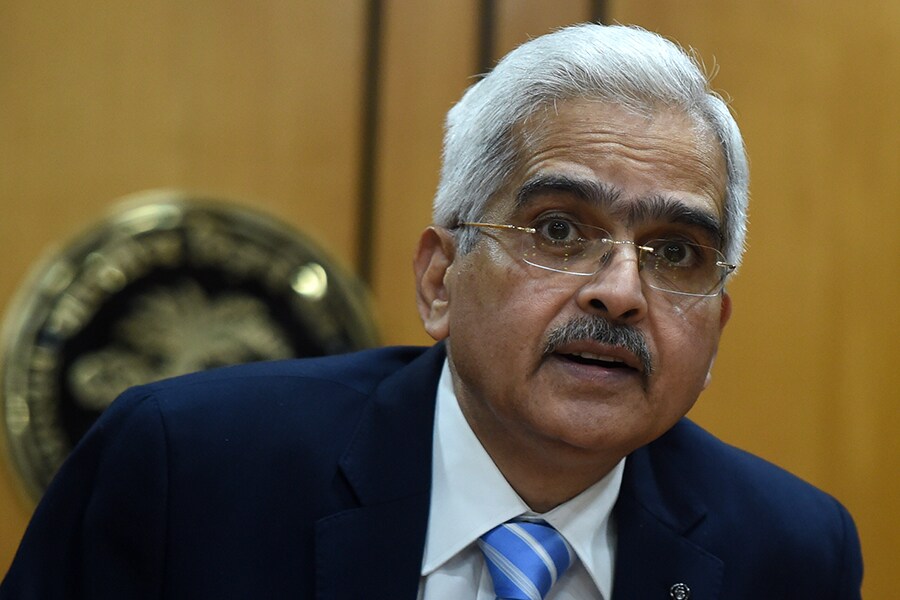
RBI lowers reverse repo rate to incentivise banks to lend more
Central bank governor Shaktikanta Das announces liquidity boost for NBFCs, housing finance and micro-financiers, to tide through the Covid-19 crisis
 Central bank, governor, Shaktikanta Das
Central bank, governor, Shaktikanta DasImage: Punit Paranjpe
The Reserve Bank of India (RBI) announced its second economic relief package on Friday, through a series of moves by which commercial banks have been nudged to start lending more; a liquidity boost will be given to non-banking financial companies, housing finance firms and micro-financiers to tide through the tough current environment where their access to finance stands limited, thanks to a pandemic-lockdown.
The classification of a non-performing asset has also been clarified by the RBI, which extends the window for it to be considered a bad loan.
Investors cheered these moves with both the benchmark 30-share Sensex and the Nifty 50 indices moving up by approximately 1.75 percent during early afternoon trade. The possibility of more announcements from the RBI, and possibly even the government, in coming days, led to fresh buying.
The RBI on Tuesday said it has cut the reverse repo rate to 3.75 percent from an earlier 4 percent. The reverse repo is the rate at which RBI borrows money from commercial banks when there is excess liquidity. The banks earn an interest by parking their funds here.
“A lower interest rate on capital parked—a negative carry—might incentivise banks to start lending more,” Sameer Narang, chief economist, Bank of Baroda. Though there is no direct connect, it might help banks take that decision to start lending more.
Economic activity in India continues to be at a standstill due to the lockdown imposed by the government, extended until May 3, to control the spread of the coronavirus. This has severely impacted the operations and finances of businesses across manufacturing and services.








